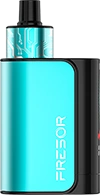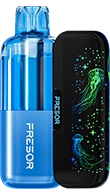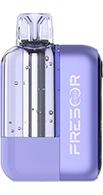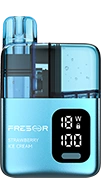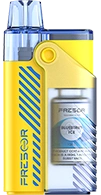What is Synthetic Nicotine? What is Its Connection to Vaping

25 June 2023
Introduction
The rise of e-cigarettes and vaping has sparked innovation in the nicotine industry, leading to the creation of synthetic nicotine. Synthetic nicotine offers a unique alternative to traditional tobacco-derived nicotine, and its popularity has been growing rapidly in recent years. In this article, we will delve into the world of synthetic nicotine, examining its origins, advantages, disadvantages, safety, and how it compares to nicotine salts and freebase nicotine.
What is Synthetic Nicotine?
Synthetic nicotine is a lab-created form of nicotine that does not come from the tobacco plant, it is also called TFN (Tobacco Free Nicotine), Zero Nicotine. Unlike traditional nicotine, which is extracted from tobacco leaves, synthetic nicotine is produced through chemical synthesis. This allows for precise control over its composition and eliminates any impurities typically found in tobacco-derived nicotine.
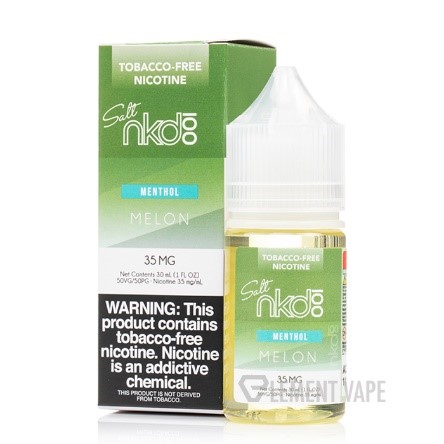

Why was Synthetic Nicotine Created?
The development of synthetic nicotine stems from the desire to provide an alternative for nicotine users. One primary motivation was to avoid the regulations and restrictions placed on tobacco-derived nicotine, which is tightly regulated due to its association with tobacco products. Synthetic nicotine offers a way for e-cigarette manufacturers and vapers to sidestep these regulations while still delivering the desired nicotine experience.
In May 2016, the Federal Drug Administration (FDA) finalized a rule allowing the agency to regulate electronic cigarettes. Following this ruling, e-cigarette companies were required to submit a pre-market tobacco application to the FDA for each product demonstrating that it is “appropriate for the protection of public health”. Companies that failed to submit a pre-market tobacco application by the deadline and companies issued marketing denial orders by the FDA because their product did not meet that standard were required to remove those products from the market immediately. However, to circumvent the FDA’s regulatory authority and continue selling products, some e-cigarette companies, like Puff Bar, began using synthetic nicotine, because it was not under the regulation of the FDA. But, soon in July of 2022, FDA officially started to regulate synthetic nicotine just like nicotine salt, the companies need to do submission for the e-liquids and vape devices prefilled with e-liquid before going to the market, but the implementation of the regulation is very difficult to operate and it takes time.
The Pros and Cons of Synthetic Nicotine
Pros:
Regulatory Advantage: Synthetic nicotine is not currently subject to the same regulations as tobacco-derived nicotine, making it an attractive option for manufacturers and consumers seeking more freedom in the e-cigarette industry.
Purity and Consistency: Synthetic nicotine is manufactured in a controlled environment, ensuring higher purity levels and consistent quality from batch to batch.
No Tobacco-Related Impurities: Unlike nicotine derived from tobacco, synthetic nicotine does not contain the potential contaminants associated with the cultivation and processing of tobacco leaves, effectively removing the impurities, and reducing harmful substances.
Better Throat hit: It is pure and odorless, greatly improving the taste and throat hit of e-liquid. For the same content of nicotine, like 20mg/mL the throat hit of synthetic nicotine is higher than nicotine salt.
Smooth and Good Vaping Satisfaction: same satisfaction comparable to tobacco-derived nicotine
Strong Stability, Less Oxidization
Cons:
Lack of Research: Synthetic nicotine is a relatively new development, and long-term studies on its effects are limited. The long-term health impacts are yet to be fully understood.
Availability and Price: Synthetic nicotine is more expensive and less readily available compared with traditional nicotine due to its nascent stage of development.
Taste and Sensation: Some users have reported that synthetic nicotine may have a different taste and throat hit compared to traditional nicotine, which could impact the overall vaping experience.
Risk of regulatory: presently in some countries, synthetic nicotine is still not regulated as strictly as nicotine salt, but with the prevalence of this kind of alternative and some negative reports, there is a possibility the relevant regulatory authorities will take action over it.
How’s the Taste of E-Juice with Synthetic Nicotine?
The taste of e-juice with synthetic nicotine can vary depending on the manufacturers and the specific flavorings used. While some users have reported subtle differences in taste compared to e-juice containing traditional nicotine, others have noted little to no discernible difference. The taste experience is highly subjective and can be influenced by personal preferences and the specific e-liquid formulation.
Price Level for Synthetic Nicotine
Currently, synthetic nicotine may be more expensive than traditional nicotine due to the relative novelty of its production process. However, as technology advances and demand increases, economies of scale may lead to more competitive pricing in the future.
Regulation Over Synthetic Nicotine
The regulation of synthetic nicotine remains a complex and evolving issue. As of now, synthetic nicotine is not subject to the same level of regulation as tobacco-derived nicotine. However, regulatory bodies are monitoring this emerging market closely and may enact stricter regulations in the future to ensure consumer safety and product quality.
Safety of Synthetic Nicotine
While synthetic nicotine is generally considered safe for use, the long-term health effects are not yet fully understood. It is important to note that nicotine itself is an addictive substance, and the risks associated with nicotine addiction apply to both synthetic and tobacco-derived nicotine. As with any vaping or nicotine product, responsible use, moderation, and understanding one's own health considerations are crucial.
Is Synthetic Nicotine Safe?
It is too early to know whether the health effects of synthetic nicotine are different than those of tobacco-derived nicotine. Many studies have been done to develop a robust understanding of the health effects of nicotine derived from tobacco, but more research is needed to learn the level of toxicity of synthetic nicotine. In addition, many of the chemical methods through which companies such as Puff Bar make the synthetic nicotine their products contain are unknown.
We do know that these products threaten to addict more young people. Nicotine use during adolescence can disrupt the formation of brain circuits that control attention, learning, and susceptibility to addiction. Research has shown early age of smoking and pleasurable initial experiences are correlated with daily use and lifetime nicotine dependence.
Many vape brands are profiting from misconceptions among young people that synthetic nicotine is a safe alternative to nicotine derived from tobacco.
Types of Nicotine in the Market:
In the market, there are generally three common types of nicotine used in electronic cigarettes and vaping products:
Freebase Nicotine: This is the most common form of nicotine used in traditional cigarettes. It is in its purest state and has a higher pH level, which can result in a harsher throat hit at higher concentrations, it is a little smelly and tastes not so good as nicotine salt.
Nicotine Salts: This is a modified form of nicotine that is chemically combined with an organic acid, such as benzoic acid. Nicotine salts are known to provide a smoother throat hit even at higher nicotine concentrations, making them popular in certain types of pod systems and devices.
Synthetic Nicotine: This type of nicotine is created in a lab and is not derived from tobacco plants. Synthetic nicotine offers an alternative for those who prefer non-tobacco-derived products and may be used in various e-liquids and vaping products.
Which Kind of Nicotine Should I Choose?
Choosing the type of nicotine that suits your preferences depends on several factors. If you prioritize regulatory freedom, reduced impurities, and consistency, synthetic nicotine may be an appealing option. However, if you prefer a smoother throat hit and a more rapid nicotine absorption, nicotine salt may be a better fit. Traditional tobacco-derived nicotine remains a widely used and regulated option, but its availability and future regulatory landscape may be more restrictive.
Ultimately, the decision should be based on personal preferences, individual health considerations, and an understanding of the risks associated with nicotine use. It’s important to exercise caution, use nicotine products responsibly, and seek guidance from healthcare professionals if needed.
Conclusion
Synthetic nicotine represents an exciting development in the nicotine industry, offering an alternative to traditional tobacco-derived nicotine. With its potential regulatory advantages, higher purity, and consistent quality, synthetic nicotine has gained traction among e-cigarette manufacturers and consumers. However, the long-term effects of synthetic nicotine are still being studied, and responsible use is essential.
As the industry evolves, it is crucial to stay informed about the latest research, regulations, and safety guidelines regarding synthetic nicotine and other nicotine alternatives. Making an informed decision about the type of nicotine to use requires considering personal preferences, health considerations, and understanding the evolving landscape of the nicotine market.

